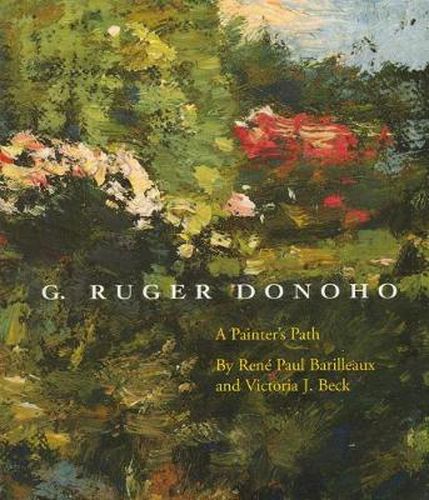Readings Newsletter
Become a Readings Member to make your shopping experience even easier.
Sign in or sign up for free!
You’re not far away from qualifying for FREE standard shipping within Australia
You’ve qualified for FREE standard shipping within Australia
The cart is loading…






A leading practitioner of the Barbizon and Impressionist styles dominating the progressive American art scene at the turn of the century, Gaines Ruger Donoho (1857-1916) has attracted little scholarly attention since his death. His work was exhibited regularly at the Paris Salon during the 1880s and attracted the critical admiration of noted artists such as James McNeill Whistler and Pierre C. Puvis de Chavannes. In 1889 he was awarded a silver medal at the University Exposition in Paris, one of the most important exhibitions of the period. Returning to New York in 1887, Donoho was associated with a group that included Childe Hassam, John Twachtman, Frank Benson and Edmund Tarbell, among others of the most advanced artists working in America at that time. Donoho’s works were shown in numerous exhibitions at art galleries, academies and museums, and he became recognized as one of America’s most promising artists. Among the first of the early modern American artists to move to Long Island, a significant venue for the evolution of American landscape painting, Donoho continued to develop his art in a way that suggests the reciprocal influences of Childe Hassam, J. Alden Weir, John Twachtman and William Merritt Chase.
$9.00 standard shipping within Australia
FREE standard shipping within Australia for orders over $100.00
Express & International shipping calculated at checkout
A leading practitioner of the Barbizon and Impressionist styles dominating the progressive American art scene at the turn of the century, Gaines Ruger Donoho (1857-1916) has attracted little scholarly attention since his death. His work was exhibited regularly at the Paris Salon during the 1880s and attracted the critical admiration of noted artists such as James McNeill Whistler and Pierre C. Puvis de Chavannes. In 1889 he was awarded a silver medal at the University Exposition in Paris, one of the most important exhibitions of the period. Returning to New York in 1887, Donoho was associated with a group that included Childe Hassam, John Twachtman, Frank Benson and Edmund Tarbell, among others of the most advanced artists working in America at that time. Donoho’s works were shown in numerous exhibitions at art galleries, academies and museums, and he became recognized as one of America’s most promising artists. Among the first of the early modern American artists to move to Long Island, a significant venue for the evolution of American landscape painting, Donoho continued to develop his art in a way that suggests the reciprocal influences of Childe Hassam, J. Alden Weir, John Twachtman and William Merritt Chase.